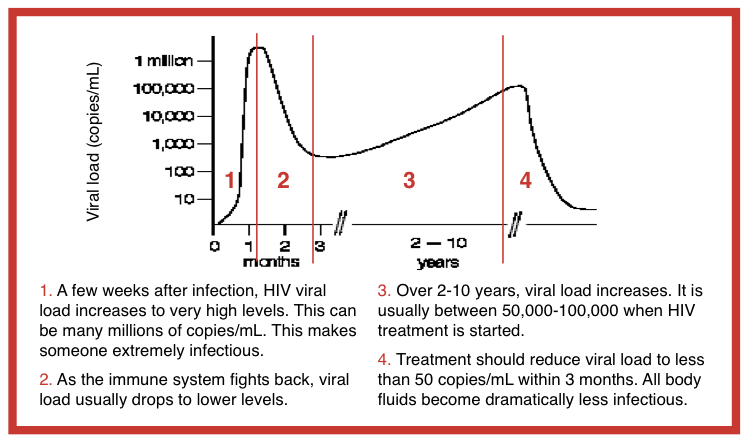
If
you have HIV or AIDS, you’ll be overloaded with a bunch of terms in
regard to your treatment plan and how well you are doing living with the
disease. One thing you will hear quite often is the term “viral
load.” This is a term that will mean a lot to you as you deal with the
illness on a daily basis.When your doctor talks about your viral load,
he or she is referring to the level of HIV that currently resides in
your blood. Knowing what your “load” is will help your doctor monitor
your disease so he or she knows what treatments to administer and
when. The number will also be a determining factor as to whether or not
the medications you are taking are working well with your body and your
illness.
According to the CDC, determining a patient’s viral load along with CD4 or immune cell numbers is one of the first steps in any HIV or AIDS treatment process. There are many policies and practices regarding HIV treatments and guidelines, and many health-care practitioners have differing opinions on how often they test.
According to AIDS.gov, there is no such thing as a regular viral load. People who do not have HIV do not have a viral load at all. It is something that applies only to people with the illness. When your viral load is tested, the doctors are looking for a certain number of particles in a milliliter of blood—what they call the particles copies. When you are being treated for HIV, your doctor’s goal is to take your viral load down to the point that it is undetectable. If you have anywhere between 40 to 75 copies in the sample of your blood, you will be declared to have an “undetectable” viral load.
Your viral load will change over the course of your disease. When you are first infected with HIV, for example, the load will be rather high. You might have a reading in the millions in one blood sample. Since it is early in the illness, the immune system will still respond and keep the viral load in place. However, as the disease progresses, the viral load will increase, and the disease will begin to damage the immune system, at which point treatment becomes a necessity.
AIDS.org features information on viral load testing that
is very important for everyone to understand. The most important thing
for patients and doctors to take into account is the amount of overall
change in the viral load, either an increase or a decrease. If you were
to drop from a reading of 50,000 to 10,000, for example, that would be
significant. A change from 200,000 to 600,000 would also be something of
concern. The most important change that can occur, of course, is if you
were to reach undetectable levels in your viral load.
Viral load changes are known as “log” changes. This is a scientific way to notate the changes using the power of 10. Some researchers have seen viral loads go from undetectable to a low level and then back again. These instances are sometimes called blips and do not really indicate that the virus is being resistant. The long-term changes are the most important to note.
Your
health-care provider will test your viral load when you are first
diagnosed in order to get a base reading. Then, you will likely be
tested every three to six months. When you start or change therapies,
you will get a test every two to eight weeks. Individual test results do
not necessarily mean very much. Your doctor will be more concerned with
the trend of the load over the course of the disease.
When you are first diagnosed with HIV, your doctor may not begin treatments right away. The CD4 count will have to tell your doctor when you will need to start a therapy. Doctors generally like to start treatments when the count falls below 350 cells.
When you are first diagnosed with HIV, your doctor may not begin treatments right away. The CD4 count will have to tell your doctor when you will need to start a therapy. Doctors generally like to start treatments when the count falls below 350 cells.
Researchers
have found that patients with a low viral load decrease their risk of
passing the disease along through sexual activities. However, low viral
counts are no guarantee that the disease will not be transmitted. Even
when the load is considered undetectable, someone with HIV can still
transmit the disease to someone else.